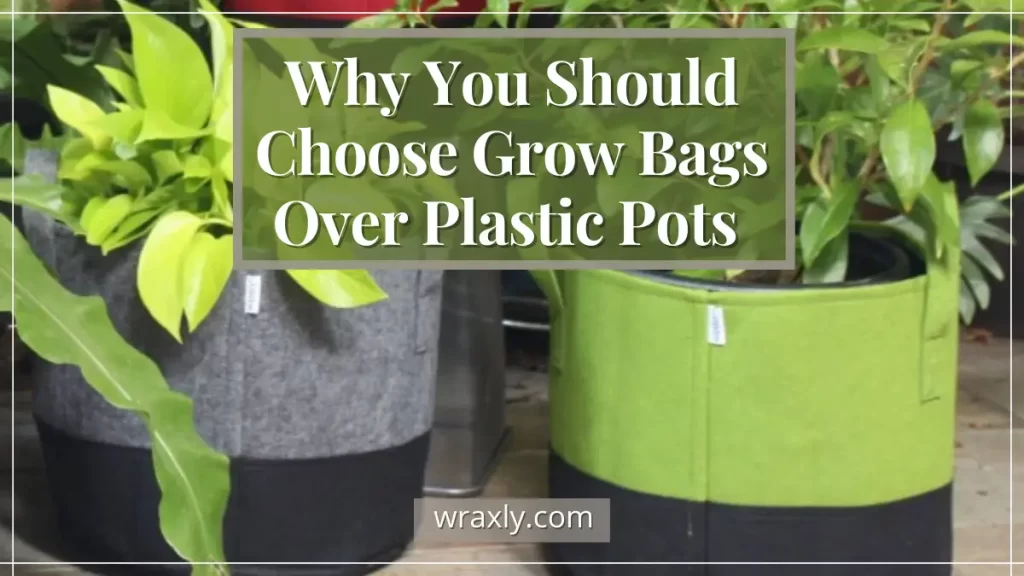Fabric grow bags are bags that you can grow your plants in. Compared to traditional plastic pots and containers, grow bags are far superior. Grow bags are made from breathable fabric that improves the aeration of your plant’s roots, and the porous fabric provides excellent drainage.
To successfully grow plants in fabric grow bags, you want to take special care with soil selection. Not every type of soil is good for growing things in grow bags. In fact, some soil types will literally suffocate the roots of your plants.
Keep reading to find out what you should know about picking the right soil for planting in a fabric grow bag.
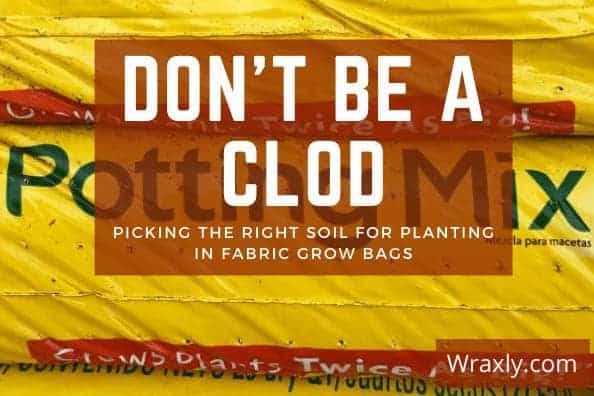
IN A HURRY? HERE’S OUR TOP PICKS…
| Image | Title | Prime | Buy |
|---|---|---|---|
 Top
Top
Top
Top | Miracle-Gro Potting Mix 2 cu. ft. | PrimeEligible | Check Price on Amazon |
 Top
Top
Top
Top | Burpee Premium Organic Potting Mix, 9 quart | PrimeEligible | Check Price on Amazon |
Top Top
Top
Top
Top | FoxFarm Ocean Forest Potting Soil Mix Indoor Outdoor for Garden and Plants | Plant Fertilizer | 12 Quart + THCity Stake | PrimeEligible | Check Price on Amazon |
 | Espoma Organic Potting Soil Mix - All Natural Potting Mix For Indoor & Outdoor Containers For Organic Gardening, 8 qt, Pack of 1 | PrimeEligible | Check Price on Amazon |
 | Miracle-Gro Indoor Potting Mix 6 qt., Grows beautiful Houseplants | PrimeEligible | Check Price on Amazon |
 | House Plant and Tropical Plant Potting Soil - Re-Potting Soil for All Types of Indoor House Plants, House Plant Re-Potting Soil - 8QTs | PrimeEligible | Check Price on Amazon |
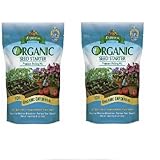 | Espoma 16 qt. Organic Seed Starter Premium Potting Mix (2) | Prime | Check Price on Amazon |
 | Fort Vee Compost-Based Potting Mix, 18 Pounds, Organic Nutrient-Boosted Potting Mix | Prime | Check Price on Amazon |
Should I use garden soil or soil mixes in my fabric grow bags?
Well prepared garden soil is best for growing plants outside in the ground. But when it comes to growing plants in containers or grow bags, a different type of soil should be used. The ideal soil used in containers should be composed of material that makes it easy to drain, while at the same time able to retain enough moisture for plant growth.
You should never use garden soil for container or grow bag gardening because it contains too much clay. When used in a container, it holds too much moisture when wet, which prevents air from reaching the roots. Additionally, regular watering required by container plants causes garden soil to compact, which leads to poor aeration and poor drainage.
This is why a soil substitute, often called potting mix, is recommended. The mix may contain some soil (called soil mix) or no soil at all (a soilless mix).
Some soilless mixes, such as peat-lite mix, may be too light for container gardening and won’t provide adequate support to plant roots. Also, soilless mixes are sterile and contain little to no nutrients. A proper potting mix should be composed of things like coir fiber, peat, bark, or vermiculite.
Any growing media must provide water, nutrients, and a physical support in order to grow healthy plants. A good growing media must also drain well. Synthetic or soilless mixes are well suited for vegetable container gardening and may be composed of sawdust, wood chips, peat moss, perlite, or vermiculite. These are free of disease and weed seeds, hold moisture and nutrients but drain well and are lightweight. Some examples of synthetic soil mixes include Jiffy Mix, Bacto, Promix, and Jiffy Pro.
The choice of artificial growing media is directly related to what types of plants one is growing. Herbs, succulents, and perennials thrive in soils that are well-drained and don’t retain a lot of moisture. If you intend to grow these plants, choose growing media that contains bark, sand, or perlite.
Foliage and tropical plants require growing media that has less course material because they prefer more moisture.
When you use these mixes, they should be lightly moistened before planting. This activates the organic nutrients in your mix and gets it ready to receive your new plant.
What kind of soil to use with grow bags?
Soil is the heart of any container garden, as it will determine whether your plants thrive or not.
A good soil mix for grow bags should be 1/3 peat moss, 1/3 compost mixture, and 1/3 of vermiculite, which helps to retain water. Fill the bag about 3/4 full, then take it by the handles and shake it around. Water the mixture lightly to help activate the organic nutrients in the mix. Your grow bag and potting mix are now ready for use.
Use your hands to dig a hole in the mixture that is deep enough for your plant. Carefully remove your plant from the pot it came in and place in your bag. Add additional potting soil and lightly tamp around the edges.
You can also mulch your grow bags with wood chips just like a normal garden. The mulch helps keep the soil moist and reduces the number of weeds that will grow.
You can reuse your soil mixture after repotting, but not the wood chips mulch. Empty the grow bags of all the soil, add about 10-20% of new compost plus the old soil, mix it well and use it again.
How to water your grow bags
Once happily transplanted, it’s time to water your new plant. Overwatering plants is just as bad as not watering enough, which is why fabric grow bags make an ideal home for your plants. Grow bags are made with a nonwoven material that is porous and allows excess water to drain. The proper way to water your grow bags is to slowly add water to your plant until you see water drain out from the bottom.
You may also be interested in… Best soil for Hydrangea
The soil should never be soggy or have water pooling on top of it. During winter months when the weather is cool, container plants could get root rot. To help prevent root rot, empty the tray of any excess water after the plant has been watered, or use a riser to keep the grow bag elevated and out of stagnate water.
Small containers will dry out more quickly than larger ones. If your plants seem to be wilting every day, group the containers so the leaves create a canopy to help shade the soil and keep it cooler.
Because grow bags do not hold excess water, they tend to dry out faster than plastic or ceramic pots. Their superior drainage and aeration capabilities lead to more watering needs, so it is best to water using one of these methods:
- Drip irrigation. Installing a drip system in the grow bag allows the bag to get a constant supply of moisture. The bottle drip system works best and many gardeners have successfully used it. A pipe drip system can also work well.
- Self-watering system. This is where you water the plants yourself. Choosing a premium grow bag that is designed with a waterproof liner will reduce the frequency that you have to water. The waterproof liner will also direct water down to the roots, better mimicking growing in the ground. If you place trays under your bags to prevent runoff from staining your cement or deck, it is important to place the grow bag on a riser to keep the bag out of any stagnant water.
Best plants for grow bags
Grow bags are great for vegetables or herbs, although larger plants, such as dwarf citrus trees, can be grown in larger bags. Most of these vegetables grow fast and do not have deep roots:
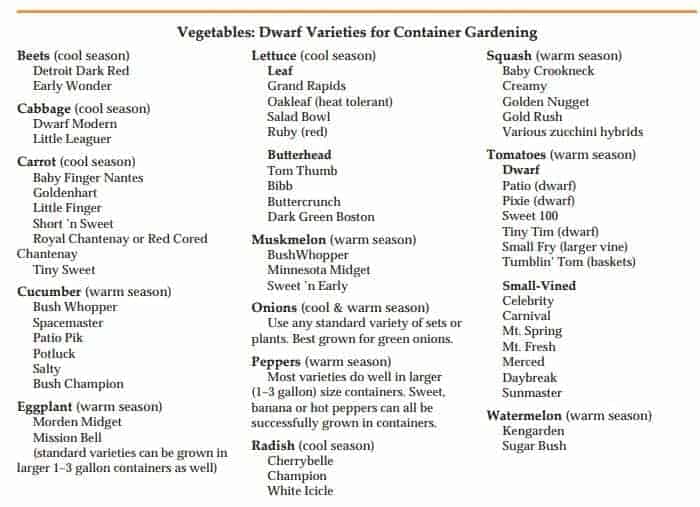
Pretty much any vegetable will grow in a grow bag, so feel free to experiment. Plant 2 to 3 plants in a bag in the spring season. When growing salad greens, plant them in rows across the width of the bag.
Why use grow bags instead of traditional containers
Grow bags are a perfect option for gardeners who want to grow a variety of plants and vegetables. If you have a little space and want to grow a variety of plants, use grow bags. They can easily be arranged so that they will receive proper sunlight by placing them near a window.
Fabric pots are great if you have poor quality soil in your area. The soil mixture you use for your grow bags can help you build an outside garden in the future. Each time you want to throw the old soil from your grow bag, dump it in an area where you plan on having a garden one day. After a few years of doing this, you will have a garden with improved soil quality. Alternatively, you can always reuse your potting mix for several seasons before disposing of it in your outside garden.
There are many other benefits of using a grow bag:
- Grow bags are easy to move around. Pots are heavy and therefor add additional weight to your plant. In contrast, grow bags are lightweight and usually have handles, which makes it super easy to move your plants around.
- They are breathable and drain well. Unlike traditional pots, grow bags are made with a nonwoven fabric that allows air to reach the plant’s roots. The material also prevents the soil from getting soggy from overwatering.
- Grow bags prevent the plants from becoming root-bound. When the roots of plants grown in a plastic or ceramic container grow too long, they circle the container and strangle the plant. When using fabric grow bags, when the roots reach the sides of the fabric, they are air-pruned, which encourages the plant to grow many small root tips which gives it a more robust root system. These small roots take in water and nutrients, making the plant thrive. Because the plant is well fed from the roots, it enables the plant to put more energy into its top growth.
- Fabric grow bags keep the soil cooler during summer. Plastic pots heat up during hot summer days since the pots cannot breathe to let heat escape. Grow bags are more insulating than plastic pots so the soil stays cooler when the sun shines.
Final thoughts
Fabric grow bags are an effective alternative to traditional ceramic or plastic containers, but it is important to use the right potting mixture. Never use outside garden soil, but rather a potting mix that is specifically formulated for your plant type.
A properly formulated potting mix combined with a quality grow bag, such as the premium two-tone design grow bags by Wraxly, will add a splash of color to your garden, and the improved durability of a premium grow bag will ensure enjoyment of your garden for many seasons to come.
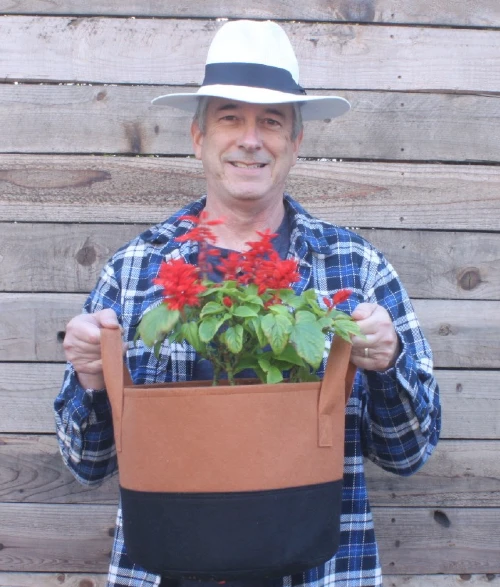
Darrell has a passion for gardening that he inherited from his father. Go here to read more about the influence his father played in his love for gardening. If you want to send Darrell a quick message, then visit his contact page here.
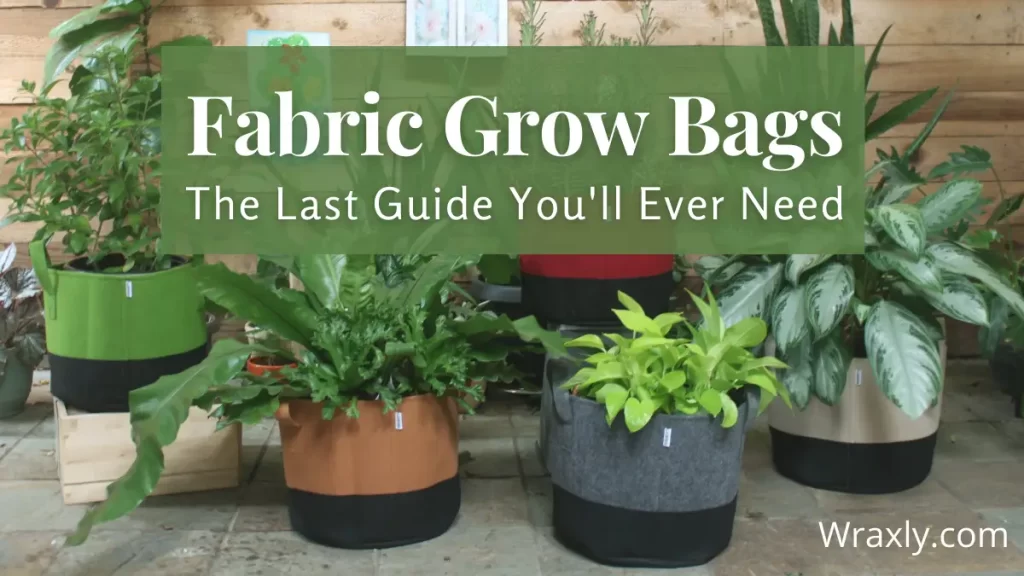
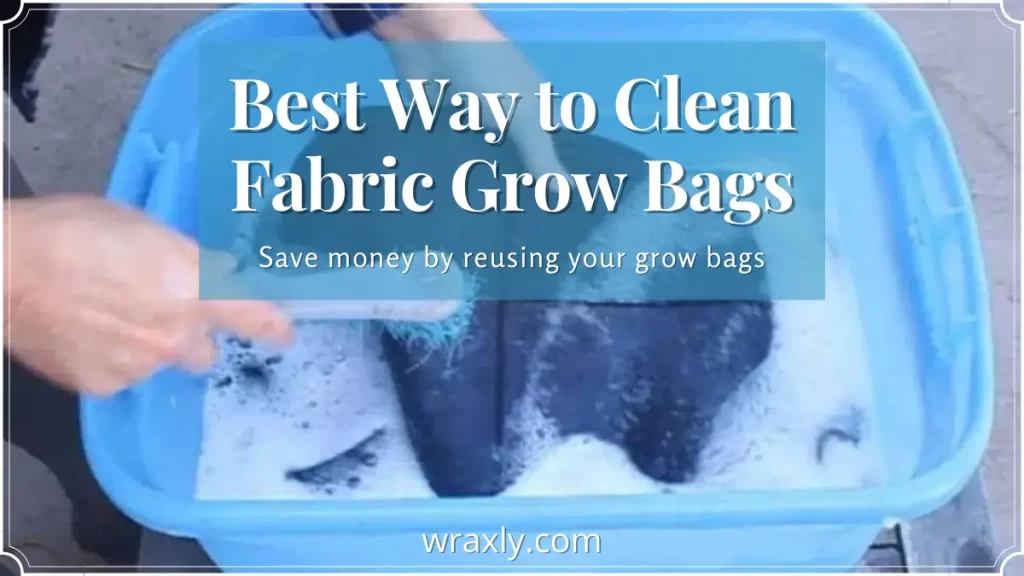
![Container gardening for beginners [Buying guide]](https://wraxly.com/wp-content/uploads/2021/02/Container-gardening-for-beginners-Buying-guide-1200-1024x576.webp)
